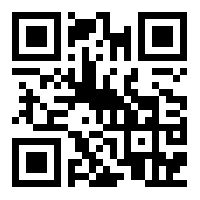Ask a Pediatrician Online
WHAT ARE THE VARIOUS CHILDHOOD INFECTIONS?
Any infection or disease that can be spread from one person to another by a specific organism is termed infectious. It is also referred to as contagious or communicable. The exposure to a variety of contagious infections or diseases from neonate to pre-school and school years are as follows:
- Mumps: Clinical case of mumps presents itself with pain and swelling of one or both parotid salivary glands, affecting age group of 5 to 15 years.
- Measles (Rubeola): It is a highly infectious disease. It often leads to serious complications. It is more common in those who have not been vaccinated. It is preventable and vaccination against the disease is highly recommended.
- Pertussis (Whooping cough): It is also known as the 100-Day cough. More cases of it occur during the winter and spring months. The affected age group ranges from infants to 5 years of age.
- Flu (Influenza): Flu is a respiratory viral infection that is contagious in nature. It is caused by one of the three influenza viruses A, B and C. It is preventable by administration of vaccine.
- UTI: These are infections in any part of the urinary system, the kidneys, bladder or urethra. More prevalent in males during infancy and in females after infancy.
- Diarrhea / Dysentery: This is the condition in which faces are discharged from the bowels frequently and in a liquid form. Severe diarrhea in children aged 6 months to 2 years is caused by rota virus. It can be fatal for infants if not treated on time. Dysentery is an intestinal inflammation, primarily that of the colon. It can lead to mild or severe stomach cramps resulting in severe diarrhea with blood or mucus in the feces.
- Respiratory syncytial virus (RSV), Pneumonia: It is the inflammation of lung parenchyma. Mild diseased cases can be managed at home. However, severe cases need hospitalization.
CAUSES THESE CHILDHOOD INFECTIONS
- Mumps: Caused by RNA virus. Source of infection are clinical (already diagnosed cases) and sub-clinical cases (where diseases have no recognizable clinical signs/symptoms).
- Measles (Rubeola): Also caused by RNA virus. Only source of infection is an already diagnosed case of measles. Transmission is through respiratory tract by droplets (mainly).
- Pertussis (whooping cough): Caused by Bordetella pertussis. Source of infection is due to the already diagnosed case of pertussis, by droplet infection and direct contact.
- Flu (Influenza): Caused by the influenza A or B virus.
- UTI: Mostly caused by E. coli organisms.
- Diarrhea/ Dysentery: Diarrhoea caused most commonly by Rota virus, whereas dysentery by shigella.
- Pneumonia: Most commonly caused by respiratory syncytial virus (RSV).
SYMPTOMS OF CHILDHOOD INFECTIONS
- Mumps: Typically presents with pain and swelling of one or both parotid salivary gland under the ears. Other symptoms include headache, joint pain, and high rise in temperature.
- Measles (Rubeola): Divided into following stages: Prodromal stage- characterized by fever, cold with sneezing, lacrimation and photophobia. The eruptive phase is marked with the appearance of rash behind the ears, which spreads rapidly. The post measles stage is characterized by weight loss, growth retardation, diarrhea, candidiasis (a fungal infection) and malnutrition.
- Pertussis (whooping cough): Initial signs are mild coughing, sneezing, runny nose, low grade fever. Later stages, cough worsens, and child may experience breathing difficulties.
- Flu (Influenza): Muscle aches, nasal congestion, sore throat, cough, chest discomfort, headache, sneezing, runny nose, fever.
- UTI: Abdominal or flank pain, fever, abdominal distension, Dysuria, incontinence, suprapubic pain, malodorous urine.
- Diarrhea/Dysentery: Liquid or watery stools more than 3 times a day. Whereas dysentery is defined as presence of blood mixed with pus and mucus in stools. Other main causes abdominal pain, vomiting, fever.
- Pneumonia: Symptoms often resemble the common cold including a stuffy or runny nose, low grade fever or chills, cough, retraction of respiratory muscles. Tachypnea (abnormal rapid breathing)/ wheezing most consistent symptom.
Should you find your child suffering from any of these symptoms, speak to a GP immediately.
TREATMENT OF CHILDHOOD INFECTIONS
- Mumps: Ensure all children are immunized by live attenuated vaccine. One clinical attack of measles also confers lifelong immunity.
- Measles (Rubeola): Best way is by prevention. Vaccination with MMR vaccine of susceptible contacts within 72 hours after exposure may prevent measles. Measles immune globulin (Ig) given in specified high risk individuals.
- Pertussis (whooping cough): Antibiotics recommended for high risk, close contacts of a child with pertussis. Ensure proper form of hand hygiene.
- Flu (Influenza): Ensure proper form of hand hygiene. Clean and disinfect contaminated objects and surfaces. Nasal decongestants, anti-inflammatory drugs and sometimes antibiotics and antiviral drugs may be required.
- UTI: On suspicion of UTI, urine specimen should be sent for culture and empirical antibiotic treatment should be started. Cotrimoxazole is to be used in uncomplicated UTI.
- Diarrhea/ Dysentery: Dehydration is fatal and to be treated as early as possible. Treatment includes oral re-hydration therapy (ORS), IV fluids, antibiotics. Main role includes hand hygiene, cleanliness and disinfected surroundings. Increase frequency of cleaning the washroom.
- Pneumonia: For mild cases, antibiotics are enough. However, for severe cases, hospitalization is needed.
Looking for a Doctor Advice?
Download the DocOnline App
- Live Chat with Doctors
- Book Doctor Appointment Online
- Speak to a Doctor within 15 Minutes
- Consult doctors via Audio/Phone Call & Video
- For You + 3 Family Members
- Store health records
- Read health tips
- Order Medicines Online & Get Lab Tests Done Easily




